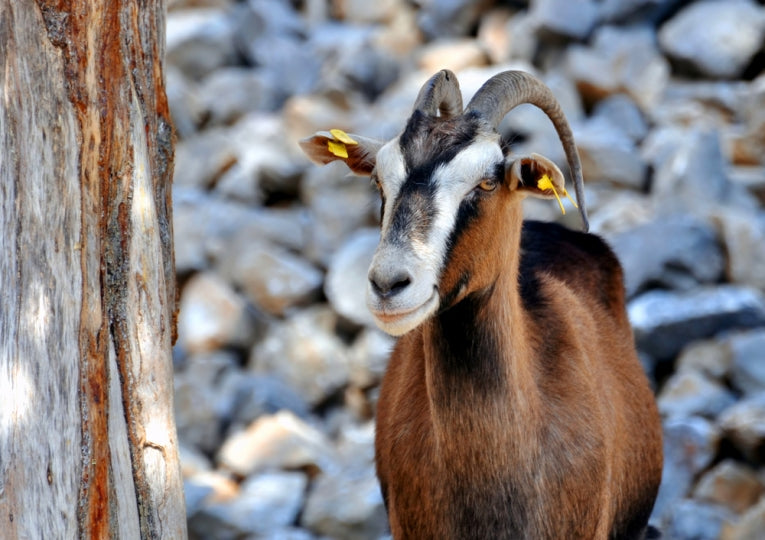When humans first cast an envious eye on animals they could domesticate, almost the first to catch it was the bezoar goat, Capra hircus. Then began the fascinating process in which the species became more suited to its new niche. It adapted its whole genome, because of human selective mechanisms but retained many wild characteristics.
In fact it's very difficult to work out how the goat slowly changed in appearance, physiology and behaviour. The Mesopotamian Fertile Crescent is the source of domestication for this and several other species such as the donkey. The bezoar, now found only in very limited numbers as the paaang or kri-kri, Capar aegagrus, is a west Asian goat that became global as its usefulness was fully exploited. Skin fibres and coats for clothing with meat, milk and even horns were its attractions, alongside rapid reproduction. 840 million are nowadays still maintained in many different climates and regions.
Goats and sheep can be assumed to have become separate species at least 25mya. This is much older than fossil-based estimates. The markhor, a central Asian species, split from other goats about 3.4mya. Then we can work out how the domestic animal split from the bezoar. The research from Koh Nomura of Tokyo University of Agriculture, in Kanagawa, and his colleagues first indicates that there could have been a population increase before the domestication in a period 250,000 years ago, during the late Pleistocene. The Eurasian pig populations also expanded at these times. Then 10, 000 years ago, domestication is associated with a decrease in the wild population. Whether this loss of wild goats was due to increased hunting, habitat loss, or competition with domestic animals is debatable.
The modern goat has developed as a result of the domestication of many different populations of wild goat, which must have been isolated from each other. Mutations that would cause slight problems must have been removed by natural selection according to the authors of this paper. They assume this because almost all deleterious genes have disappeared over the long periods the goat has been kept as a domestic herd animal or under semi-natural conditions. Only goats from southern parts of Asia have any fixed "deleterious mutations," presumably because they were transported from the north (China and Mongolia) under conditions that created genetic bottlenecks.
Individual breeds of goat can live in extreme climates and have interbred within these areas, on all available continents. This means the maintenance of selection pressure on other goats seems to have been a constant almost natural process.
The individuals chosen for blood sampling were 9 goat breeds from Asian countries, the bezoar and the markhor and the Gobi ibex from Mongolia. Comparisons were made with sheep, yak, water buffalo, deer, whales and even cats and dogs. This all helped to reference the genetic change experienced within the goat genome over a major part of mammalian evolution.
Koh Nomura et al publish their paper in the journal PLoS ONE.















